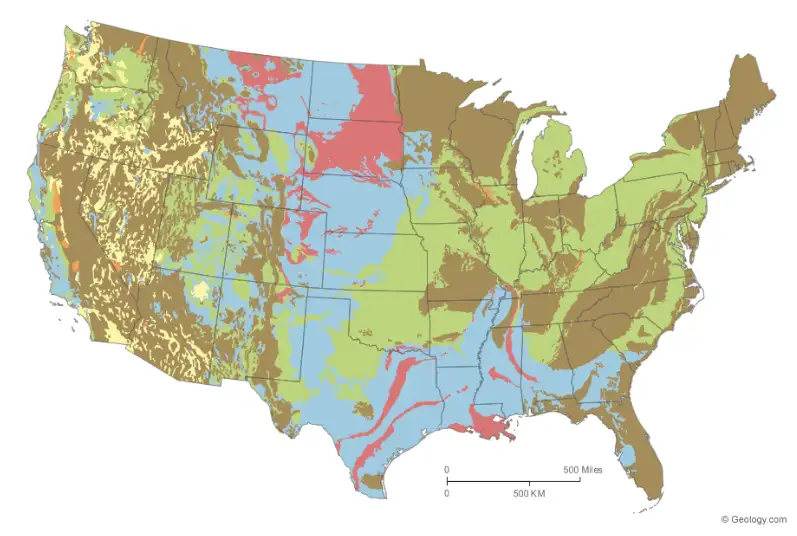Rural Land Is Cheap. The Soil Can Be Costly.
Rural Land is Cheap. The Soil Can Be Costly.
Practical Strategies for Building on Expansive Soil in Arkansas, Mississippi, Louisiana & Alabama
Practical Strategies for Building on Expansive Soil in Arkansas, Mississippi, Louisiana & Alabama
Across the US, expansive soils cause $13 billion in annual damage to buildings and infrastructure, and the South is not immune to this risk. 1
The South sits on unique geological deposits that are prone to extreme shrink–swell behavior, resulting in cracked foundations, damaged buildings, and a reduction in a structure's usable lifespan.
%20(transparent).png?width=480&height=480&name=Tilted%20Data%20Center%20Sheets%20(1200x%201200%20px)%20(transparent).png)
Download Now
Lessons in Data Center Construction: Rural Land is Cheap. The Soil Can Be Costly demonstrates how the world’s largest companies are mitigating the risk without costly over-excavation or chemical stabilization.
See proven strategies for tackling projects on expansive soil in Arkansas, Mississippi, Louisiana & Alabama, and how you can apply the same details to projects of any size.
What You Need to Know About Building in the South
- Clay-rich soil across the South swells and shrinks dramatically with moisture, exerting pressures of up to 30,000 psf on foundations and structural elements. 2
- Seasonal rainfall, high groundwater tables, and poor surface drainage increase soil reactivity, causing repeated movement cycles that stress slabs, piers, walls, and beams.
- Geologic deposits, like Blackland Prairie and Yazoo Clay, can reach hundreds of feet deep, making traditional excavation strategies cost-prohibitive. 3
- Chemical stabilization is less effective in saturated or organic soil types common to the Gulf Coastal Plain.
.png?width=600&height=399&name=StormVoid%20under%20concrete%20(800%20x%20532).png)
Strategies for Expansive Soil
Over-Excavation
A traditional approach is to remove the expansive clay and replace it with a stable fill. While effective for shallow deposits, this method quickly becomes impractical in the South, where active clays can extend tens to hundreds of feet below the surface. Additionally, the volume of soil to be hauled, disposed of, and replaced often drives costs and timelines beyond project feasibility.
(darkened).png?width=600&height=300&name=Excavation%20photo%20from%20Canva%20(wide%20shot)(darkened).png)
.png?width=518&height=300&name=chemical-Injection-rig%20(Cropped).png)
Chemical Stabilization
Mixing additives like lime or cement into the soil can reduce swell potential. In the South, however, high water tables, mineral-rich soil, and local environmental concerns can limit feasibility. For example, saturated conditions, like those common in Mississippi or Louisiana, can hinder the effectiveness of chemical stabilization, thereby increasing the structural risk.
Structural Solutions
Void forms provide a simple, cost-effective, and scalable solution. By creating controlled voids beneath slabs, beams, walls, and piers, void forms create a space for soil to heave into without transferring pressure to the structure above.
Available in materials ranging from biodegradable corrugated carton to weatherproof plastic, VoidForm can be tailored to the local environment. With a manufacturing facility in Mississippi, VoidForm simplifies sourcing.

FAQs
Q: What states have expansive soil?
Expansive soil deposits exist worldwide and throughout the US, with notable concentrations in several distinct regions. Damage from expansive soil is widely reported in Texas and Colorado, as well as further east, with substantial areas of Arkansas, Mississippi, Louisiana, and Alabama sitting on top of these deposits. Honorable mentions include regions of the Midwest, including Montana, North Dakota, South Dakota, and Illinois.
Q: Can I build on expansive soil?
Building on expansive soil is possible, but it requires specific measures to prevent foundation and structural damage. A thorough geotechnical investigation is essential before construction. Soil borings and laboratory testing can determine the depth, composition, and severity of expansive soil on site, which will help determine the most appropriate mitigation strategies.
Q: What makes Southern soil especially difficult to build on?
The soil types in the South are not only highly reactive but also deep and widespread. Porter's Creek Clay, for example, can reach depths of 200 feet in deposits in Northern Mississippi, making excavation unworkable, while Yazoo Clay can expand more than 200% and exert pressures up to 25,000 psf.
Combined with poor drainage and high water tables, these soils pose unique design challenges for large-scale foundations. Unlike excavation or chemical stabilization, structural alternatives such as void forms are not dependent on local conditions or soil chemistry, making them one of the most adaptable strategies in these environments.
Q: Why don't traditional solutions like overexcavation or chemical stabilization always work in the South?
On smaller projects, overexcavation or chemical stabilization methods are the traditional strategies for reducing soil activity. Over-excavation requires moving and replacing millions of cubic yards of soil, which drives up hauling costs and project timelines.
Chemical stabilization (lime or cement treatment) often fails in high groundwater or the presence of specific organic elements in the soil, and scaling up to hypersize projects can push material costs into scarcity pricing. Chemical stability also requires specific soil and environmental conditions to perform properly. More practical in all types of conditions and often more cost-effective, VoidForm offers a broad range of products to protect in and around concrete beams, walls, slabs, and utilities — a proven solution trusted by engineers for over 45 years
.png?width=214&height=101&name=VoidForm%2045y%20logo%20(resized).png)

